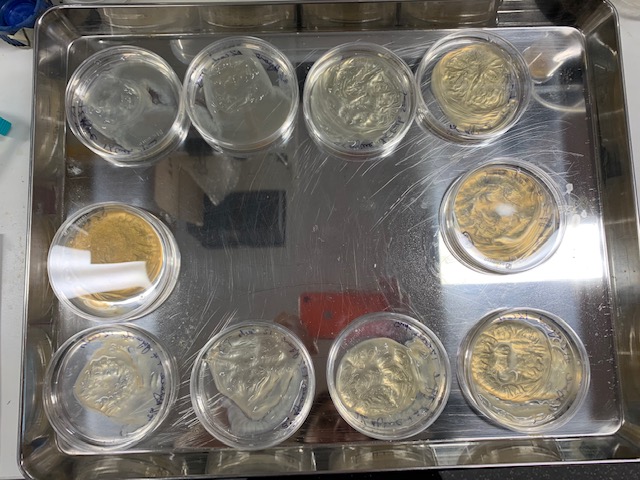Hydrogels are a network of crosslinked polymers that do not dissolve but can swell in water or respond to the environment.
They have a broad range of applications.

The personal lubricant (see earlier post) has led to investigation toward a range of other hydrogels.
Together with Peng Su we have been working toward production of hydrogels.

Hydrogel properties:
- both solid and liquid
- high biocompatibility
- can trap water
- shrinks when dried
We have investigated with both homo-polymer (single) and co-polymer types. Certain types link without need for chemical crosslinking. Others we have chemically cross linked.
Applications:
- Can be occupied by drug molecules for drug delivery
- cell culture/engineering as extra-cellular/stem cell matrix
- contact lens
- wound dressing
- can influence cell behaviour
- water carrier/hydrophilic absorbent polymer
- cancer treatment
- drug delivery
- bio-sensor – temperature, pH sensitive, glucose, antigens
- skin generation
- similar to natural tissue
- cell entrapment – low toxicity, hydrogel beads
- time release
- transport properties
- can be injected
- food industry gel
Challenges;
- non-adherent
- low strength
- difficult handling

Initial experiments at CMDB showed that the delicate hydrogels polymers were disrupted by the addition of a crosslinking chemical. A two step, spray and dip method was developed by myself and Peng Su.
Reference:
Information pertaining to hydrogel properties and application.
https://www.slideshare.net/BobyKumar/hydrogels60929707